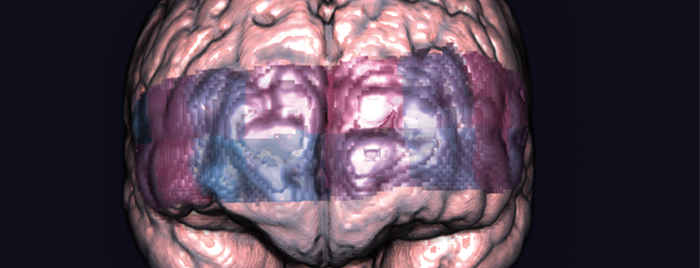While virtual environments often are associated with gaming and entertainment, OSC’s Interface Lab has translated the technology into effective training and assessment tools for use by various sectors such as the health care, automotive and manufacturing industries.
The Interface Lab explores the capabilities the virtual world offers to a variety of professional areas. Three of the lab’s main focus areas include virtual temporal bone surgery, simulated hazard training for home health care and interfaces used for studies in distracted driving in collaboration with OSU’s Driving Simulation Lab.
DRIVER ALERTNESS
One thing we’re doing with regard to the Driver Simulation Lab that has implications in everything we do—because it’s basically looking at brain physiology—is development for software using the fNIR (functional Near Infrared Imaging) system. Using near infrared light, you wear a headband and there’s optics on the headband that emit near infrared light that goes through the skull and into the cerebral cortex. So, fNIR provides, in near real-time, a low cost, non-invasive method to determine the location and procession of functional activity within the brain during specified tasks.
There’s a lot of interest in distracted driving right now. One of the reasons people are distracted is they’re bored, so they seek something to do while driving. We’re focusing on the use of fNIR in studying attention during driving and surgical training. By integrating fNIR data with direct volume rendering, the group is developing a non-invasive, cost-effective tool for viewing and quantifying human performance. What we want to see is: Does the frontal lobe drop out at a certain point if you’ve been driving for a while?
This area of study has been many years in the making with my interest in brain science.
GOING WIRELESS
With recent upgrades, we’re going to emphasize working toward shared virtual environments where individuals can move around freely without tethered devices. Our big goal is not only to create more innovative environments for research into how virtual environments can be used but also to use these to obtain better visual representations of a common model.
As we increase in complexity within industry, education and so on, the question becomes ‘How do people understand what the situation is?’ If it’s a structural representation—whether it be an automobile, part or molecular modeling—what we want to do is put in their hands a robust set of tools that allows them to manipulate structures, visualize information very intuitively and use the power of the supercomputer for updates to steer equations and get results very quickly.

